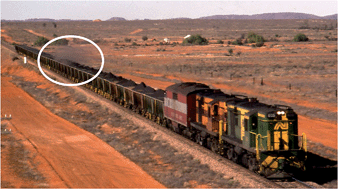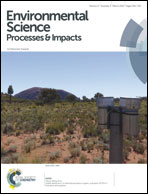Lead and zinc dust depositions from ore trains characterised using lead isotopic compositions†
Abstract
This study investigates an unusual source of environmental lead contamination – the emission and deposition of lead and zinc concentrates along train lines into and out of Australia's oldest silver–lead–zinc mine at Broken Hill, Australia. Transport of lead and zinc ore concentrates from the Broken Hill mines has occurred for more than 125 years, during which time the majority was moved in uncovered rail wagons. A significant amount of ore was lost to the adjoining environments, resulting in soil immediately adjacent to train lines elevated with concentrations of lead (695 mg kg−1) and zinc (2230 mg kg−1). Concentrations of lead and zinc decreased away from the train line and also with depth shown in soil profiles. Lead isotopic compositions demonstrated the soil lead contained Broken Hill ore in increasing percentages closer to the train line, with up to 97% apportioned to the mined Broken Hill ore body. SEM examination showed ceiling dusts collected from houses along the train line were composed of unweathered galena particles, characteristic of the concentrate transported in the rail wagons. The loss of ore from the uncovered wagons has significantly extended the environmental footprint of contamination from local mining operations over an area extending hundreds of kilometres along each of the three train lines.


 Please wait while we load your content...
Please wait while we load your content...